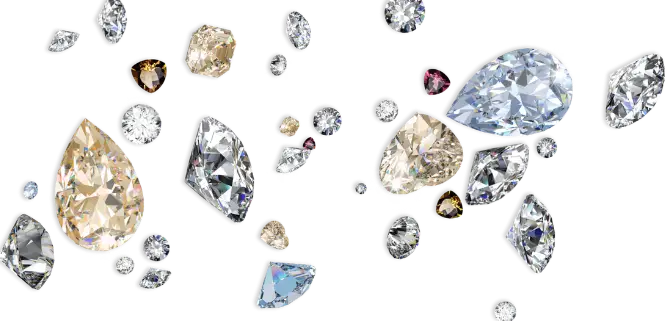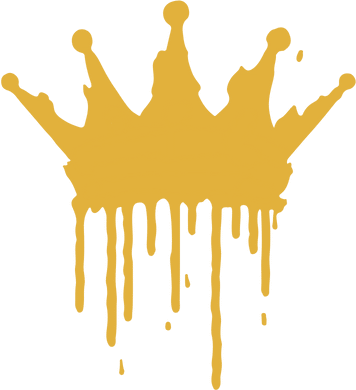
Diamonds are usually the classic clear, white sparkle we all know—but what if they weren’t? What if they came in a kaleidoscope of colors, each one more dazzling than the last? Good news: they do.
Colored diamonds are the rebels of the diamond world, breaking free from tradition and making their mark in shades of pink, blue, green, yellow, and even black. They’re bold, rare, and full of personality—kind of like the people who wear them.
So, what’s the deal with colored diamonds? Are they natural? Lab-grown? What makes them so special? Let’s break it down.
Why Are Diamonds Colored? #
In nature, diamonds develop color when trace elements sneak into their structure during formation. For example:
-
Yellow & Orange → Thanks to nitrogen molecules doing their thing.
-
Blue → A little boron goes a long way.
-
Green → Exposure to natural radiation (yes, really).
-
Pink & Red → A mystery, even to scientists. The color is thought to come from unique distortions in the diamond’s crystal lattice under extreme pressure.
-
Black → Not just one color, but tiny mineral inclusions (like graphite) that create a deep, bold look.
With lab-grown diamonds, the same science applies—but it’s done in a controlled environment, meaning we can create stunning colored diamonds with even more vibrancy, minus the geological waiting game.
The Rarity Factor #
In the world of mined diamonds, colored diamonds are the unicorns. They’re rare—some of them ridiculously so. Pink diamonds, for instance, are so scarce that prices have skyrocketed in recent years. The legendary blue Hope Diamond? One of a kind.
Lab-grown colored diamonds, on the other hand, offer the same stunning hues but with more accessibility. They’re just as real, just as breathtaking, but without the hefty price tag that comes with rarity.
How Fluorescence Affects Lab-Grown Diamond Color #
Fluorescence is a natural glow that some diamonds emit under UV light, caused by how their atomic structure interacts with certain wavelengths. It can have a fascinating effect on diamond color—sometimes enhancing it, sometimes slightly altering it:
-
Blue fluorescence can make near-colorless diamonds appear whiter.
-
Strong fluorescence in fancy-colored diamonds can either deepen the color or create an unexpected undertone—sometimes adding a neon-like intensity to blues and yellows.
-
In certain cases, fluorescence can slightly haze the diamond’s appearance under strong light, which is why careful selection matters.
For lab-grown colored diamonds, we assess fluorescence carefully to ensure it complements, rather than detracts from, the stone’s brilliance. Our expert selection process ensures that the color remains rich, vibrant, and true to what you see in natural light—because no one wants a diamond that looks different under every lighting condition.
Why Choose a Colored Diamond? #
-
They’re Unexpected → A pink or blue diamond is a conversation starter. It’s different, bold, and says, “I don’t follow the rules—I make them.”
-
They’re Personal → Color is deeply emotional. Maybe you love the calm of blue, the warmth of yellow, or the power of black. Your jewelry should reflect you.
-
They’re Future Heirlooms → A colored diamond isn’t just a gem; it’s a story. A memory. A symbol of whatever moment in time you choose to mark.
-
They’re (Surprisingly) Versatile → Who says engagement rings have to be white diamonds? A soft champagne diamond, an electric blue solitaire, or a bold green stone can make just as much of a statement.
How We Choose Our Lab-Grown Colored Diamonds
At Adamas, we don’t just grab the first diamond off the shelf. Each colored diamond is hand-selected based on three key factors: #
-
Color Saturation & Hue → We look for rich, vibrant color with even saturation, avoiding stones that are too faint or have distracting undertones.
-
Clarity & Light Performance → A great colored diamond should still sparkle beautifully. We choose stones with excellent clarity and faceting to maximize brilliance.
-
Fluorescence Impact → We specifically check fluorescence in each stone to ensure it enhances—rather than distorts—the color, selecting only those that hold their beauty in all lighting conditions.
Luxury should be a choice, not a compromise. That’s why we take the guesswork out of selecting a colored diamond, making sure you get a stone that’s as exceptional as you are.
Ready to Go Beyond the Ordinary? #
Whether you’re looking for a pink diamond that screams romance, a black diamond that says “mystery,” or a vibrant yellow that radiates joy, colored diamonds are proof that rules were made to be rewritten.
Break the rules. Keep the diamonds. Change the game. Which color will you choose?


